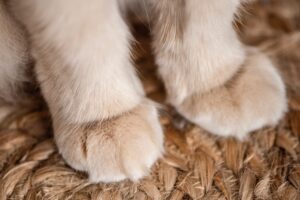Cats are beloved pets, but their sharp claws can wreak havoc on our furniture and even cause accidental scratches. This leads many cat owners to search for a solution that is both effective and humane. One popular option that has gained traction in recent years is cat nail caps. But do they actually work? In this comprehensive guide, we will explore the effectiveness of cat nail caps and provide you with all the information you need to make an informed decision for your furry friend.
Cat nail caps are tiny plastic or acrylic covers that are applied to a cat’s claws to protect them from causing damage. They are designed to fit snugly over the nails and are usually secured with adhesive or glue. These caps come in various colors and sizes, allowing you to choose the best option for your cat.
The Benefits of Cat Nail Caps
Protecting Your Furniture and Belongings
One of the main benefits of cat nail caps is their ability to prevent damage to your furniture and belongings. By covering the sharp claws, the caps create a barrier between your cat’s nails and the surfaces they may scratch. This can help preserve your furniture, curtains, and carpets, saving you from costly replacements or repairs.
Preventing Accidental Scratches
Another advantage of using nail caps is that they can minimize the risk of accidental scratches. Cats are agile creatures, and sometimes their sharp claws can inadvertently harm their owners or other household members during play or jumping. Nail caps act as a protective barrier, reducing the likelihood of painful scratches.
Offering a Humane Alternative to Declawing
Declawing, a surgical procedure that involves removing a cat’s claws, is considered controversial and inhumane by many animal welfare organizations. Cat nail caps provide a more compassionate alternative, allowing your cat to exhibit natural scratching behaviors without causing harm. They do not interfere with the cat’s ability to retract their claws or perform normal activities.
How to Apply Cat Nail Caps
Applying cat nail caps may seem daunting at first, but with a little practice, it can become a routine task. Here’s a step-by-step guide to help you through the process:
-
Gather the necessary supplies: Before you begin, make sure you have the nail caps, adhesive or glue, and a pair of nail clippers.
-
Prepare your cat: Find a quiet and comfortable space where you can safely handle your cat. You may want to have treats on hand to reward your cat for good behavior.
-
Trim your cat’s nails: Start by trimming your cat’s nails to ensure they are at a manageable length. This will make it easier to apply the nail caps and ensure a secure fit.
-
Select the appropriate size: Choose the correct size of nail caps for your cat. Measure the diameter of your cat’s nails and select the corresponding size from the packaging.
-
Apply the adhesive or glue: Follow the instructions provided with the nail caps to apply the adhesive or glue. Be careful not to use too much, as it can overflow and cause discomfort for your cat.
-
Gently place the nail caps: Carefully place each nail cap over your cat’s nails, applying slight pressure to ensure they are securely attached.
-
Reward your cat: Once you have successfully applied the nail caps, reward your cat with treats and praise to create a positive association with the experience.
Do Cat Nail Caps Really Work?
The effectiveness of cat nail caps can vary depending on the individual cat and their willingness to accept wearing them. While some cats may readily adapt to the caps, others may take some time to adjust. It is important to note that nail caps are not a permanent solution and will require regular replacement as your cat’s nails grow.
Addressing Concerns and Myths
Myth: Nail Caps Hinder Nail Retraction
Some people believe that nail caps prevent cats from retracting their claws fully, but this is a misconception. Nail caps only cover the tip of the claw that is not retracted, allowing the cat to perform their natural movements without restriction.
Myth: Nail Caps Cause Pain or Damage
When applied correctly, nail caps should not cause any pain or damage to a cat’s claws or nail beds. It is essential to choose the appropriate size, trim the nails beforehand, and use the recommended adhesive or glue.
Myth: Nail Caps Are Cruel or Inhumane
Cat nail caps are considered a humane alternative to declawing, which involves the removal of the entire claw. Nail caps allow cats to exhibit normal scratching behaviors without causing harm to themselves or others. They are widely recommended by veterinary professionals and animal welfare organizations.
Tips for Getting Your Cat Used to Nail Caps
Introducing your cat to nail caps may require some patience and training. Here are a few tips to help your cat adjust:
-
Start with short sessions: Begin by applying a few nail caps at a time and gradually increase the duration as your cat becomes more comfortable.
-
Positive reinforcement: Reward your cat with treats, praise, or playtime after each successful nail cap application to create positive associations.
-
Monitor your cat’s behavior: Observe your cat’s behavior while wearing the nail caps. If you notice any signs of distress or discomfort, consult with your veterinarian for guidance.
What do you think about Nail Caps? Please register to post a reply below and to post in the Forums.






